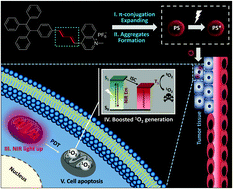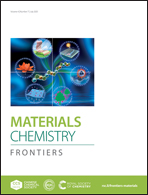Efficient near-infrared photosensitizer with aggregation-induced emission characteristics for mitochondria-targeted and image-guided photodynamic cancer therapy†
Abstract
Mitochondria-targeted photosensitization provides a facile yet precise therapeutic modality in photodynamic therapy (PDT). Herein, we report two cationic luminogens (TPE-QN and TPE-DQN) with aggregation-induced emission (AIE) characteristics by integrating the tetraphenylethylene group with the quinolinium unit. By expanding the molecular π-conjugation, the emission of TPE-DQN was successfully red-shifted to 650 nm with a large Stokes shift (∼200 nm). Benefiting from good biocompatibility as well as a suitable cationic feature, both AIE luminogens (AIEgens) were able to specifically stain the mitochondria in cancer cells, which enabled them to distinguish cancer cells over normal cells. Both AIEgens also exhibited a high signal-to-noise ratio even without a washing step and excellent photostability. Moreover, TPE-QN and TPE-DQN generated singlet oxygen (1O2) efficiently under white light irradiation while the 1O2 generation efficiency of TPE-DQN was as high as 0.83. The selective cancer cell targeting and high 1O2 generation efficiency allowed TPE-DQN to be an excellent therapeutic agent for image-guided PDT in cancer cell ablation and tumor inhibition.



 Please wait while we load your content...
Please wait while we load your content...